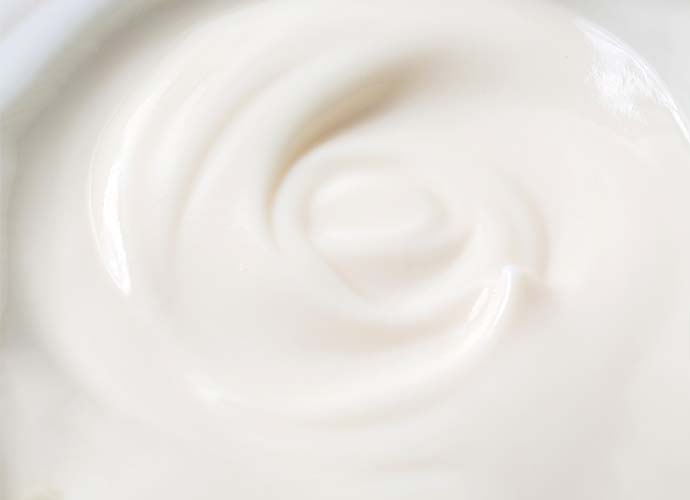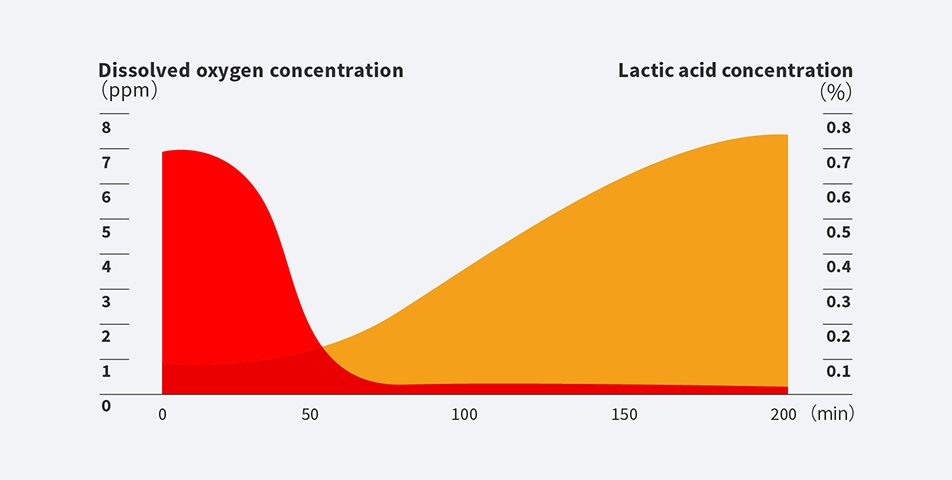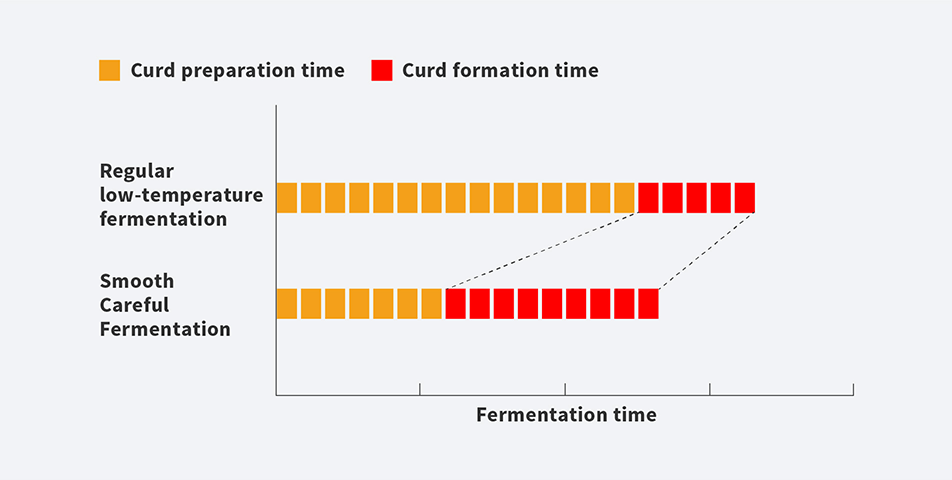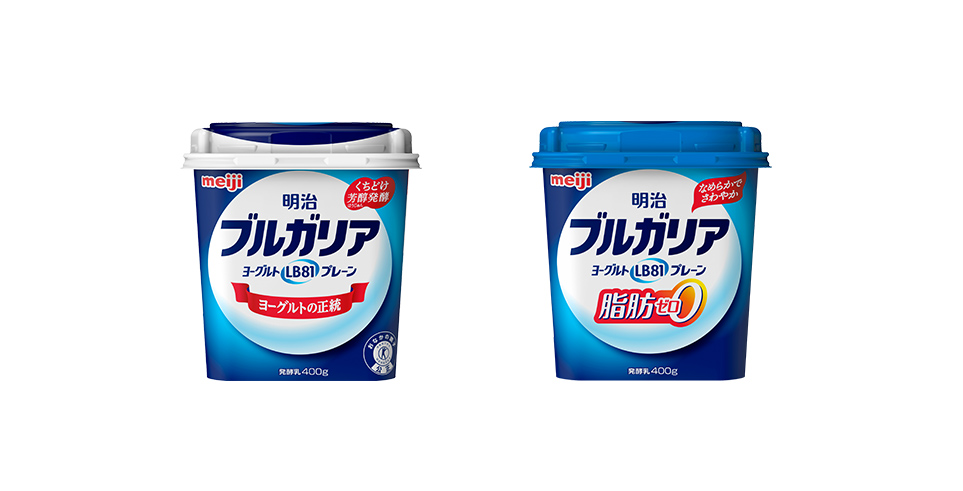LT-ROF Fermentation
A breakthrough innovation that has made it possible to produce yogurt on a commercial level with the same flavor as traditional Bulgarian yogurt fermented in unglazed pots. This is called "Smooth Careful Fermentation" or "Maroyaka Tannen Hakkou".

Traditional Yogurt in Bulgaria is Made in Unglazed Pots
Traditional yogurt in Bulgaria is made in unglazed pots. During fermentation in these unglazed pots, the milk becomes condensed due to moisture being absorbed by the pot. The absorbed moisture then evaporates from the surface of the pot providing a cooling effect resulting in low-temperature fermentation.
Yogurt made in this way is smooth and full-bodied, with a fine texture. However, it takes time to ferment at low temperature, which makes it unsuitable for commercial production.
The Breakthrough Innovation that Made Possible Commercial Production of a Yogurt with the Same Taste as Traditional Bulgarian Yogurt Using Low-Temperature Fermentation
LB81 lactic acid bacteria1 is a facultative anaerobic bacteria2, meaning fermentation proceeds with or without oxygen. For this reason, oxygen has typically not been considered to be important. An insight that fermentation could be conducted in the complete absence of oxygen lead the development of a new fermentation technology called "Low-Temperature, Reduced Oxygen Fermentation (LT-ROF)" or "Smooth Careful Fermentation".
During "Smooth Careful Fermentation", deoxygenation is performed prior to fermentation which results in lactic acid bacteria being more active during low-temperature fermentation, which shortens the fermentation time while lengthening the curd3 formation time. As a result, the traditional problems associated with low-temperature fermentation, namely soft curd and long fermentation times, were avoided. This method produced a yogurt with a smooth flavor, consistent texture, and excellent curd tension, thus reproducing in the factory the taste of traditional Bulgarian yogurt produced in unglazed pots.
- LB81 lactic acid bacteria: "LB81" is derived from the strain numbers of the starter cultures, LB stands for Lactic Acid Bacteria, and 81 is short for the final digits of the strain numbers 2028 and 1131. Bulgaria yogurt fermentation is carried out using a combination of Lactobacillus delbrueckii subsp. bulcaricus 2038 and Streptococcus thermophilus 1131. This combination provides yogurt with both good flavor and probiotic properties (improved intestinal condition).
- facultative anaerobic bacteria: can grow with or without oxygen present.
- curd: white solids consisting of casein, milk proteins, that result from the acidity of lactic acid produced by lactic acid bacteria.
Dissolved oxygen concentration and lactic acid acidity changes during normal fermentation

As the dissolved oxygen concentration approaches 0 ppm, lactic acid bacteria become activated, as lactic acid concentration increases, curd formation occurs.
Comparison of the curd formation times

With deoxygenation, curd formation begins more quickly than with regular low temperature fermentation and lasts longer, allowing for careful fermentation. Thus, the usual problem of properly soft curd formation during low-temperature fermentation was avoided.

Smooth Careful Fermentation has been employed in the production of Meiji Bulgaria Yogurt LB81, Meiji Bulgaria Yogurt LB81 0 Fat.
Patent No.:JP3083798 and JP3091752